Art Fairs
AIPAD, Still Beautifully Unsettling After All These Years
AIPAD gives your searching eyes places to rest, places to explore.
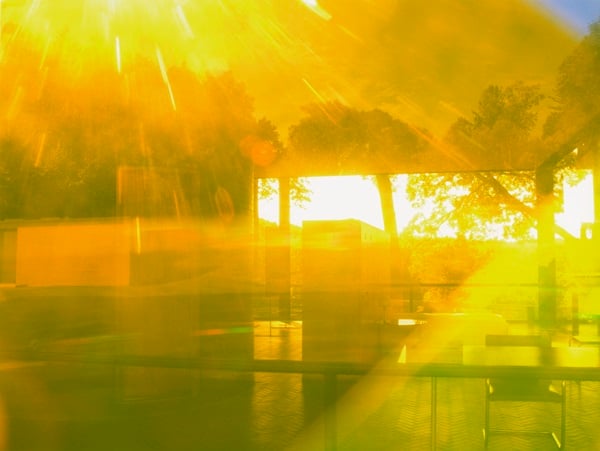
Photo: Courtesy the artist and David Zwirner, New York/London.
AIPAD gives your searching eyes places to rest, places to explore.

by
Rozalia Jovanovic

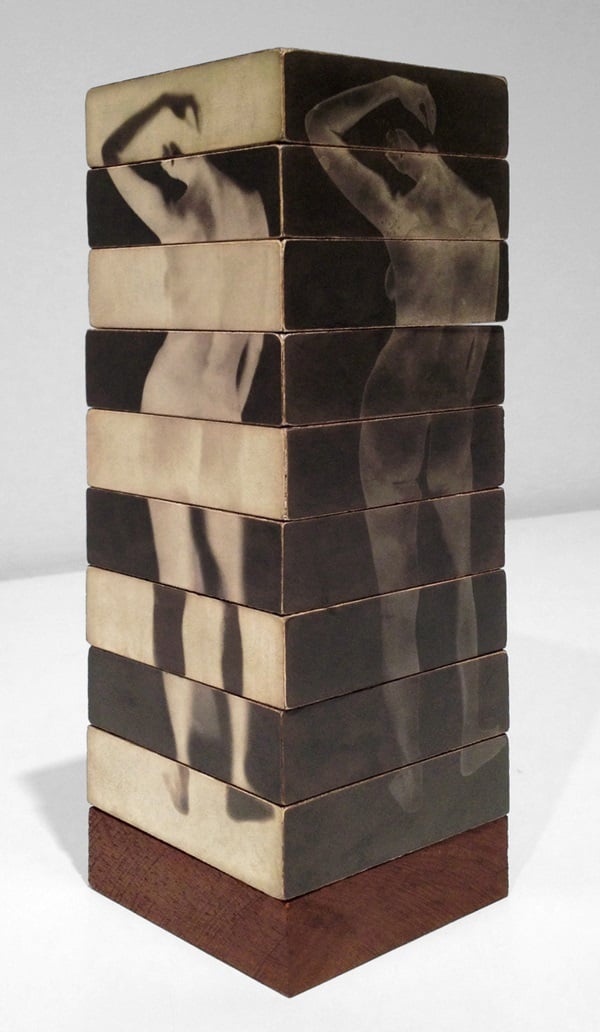
Robert Heinecken, Figure Sections/(Multiple Solution Puzzle) (1966).
Photo: Courtesy Robert Koch Gallery, San Francisco.
The AIPAD Photography Show New York opened its doors yesterday at the Park Avenue Armory, for its 34th iteration. Yet despite its traditional share of vintage and documentary offerings, it was evident that the fair is simultaneously embracing newer, more experimental trends in contemporary photography. From established masters of photo-based sculpture and collage like Robert Heinecken to artists of successive generations including Alison Rossiter and James Welling, AIPAD was alive with works of creative pioneering. Here’s a sampling of what was on view.
One of the more novel treats, at San Francisco’s Robert Koch Gallery, was a photo-sculpture by Robert Heinecken. The work is a timely addition to the booth since “Robert Heinecken: Object Matter,” the first retrospective of the photographer’s work, is currently on view at the Museum of Modern Art. The photo tower, which exemplifies the ways Heinecken transcended the conventions of photography while employing its processes, stands roughly eight inches high. It is one of only a handful that are known to exist, according to gallery director Robert Koch, and he believes it’s the only one available on the market.
“It predates the Rubik’s Cube by several years,” said Koch jokingly referring to how the work, when it was less rare, was even used as a toy for kids. MoMA has one in its collection. The photographer, who died in 2006, also created lithographs, collages, and photo-based paintings. Also on view in the booth were works by Italian Futurist Anton Bragaglia (whose works are included in the Guggenheim’s Italian Futurism show) and Charles Marville (whose images are on view at the Metropolitan Museum of Art). There were also tintype portraits of soldiers in Afghanistan by Ed Drew, and surreal landscape images that are composites of 150 images by up-and-comer Lauren Marsolier. While you can pick up works by younger artists for $1,800, the vintage works will take you into the mid-six figures.
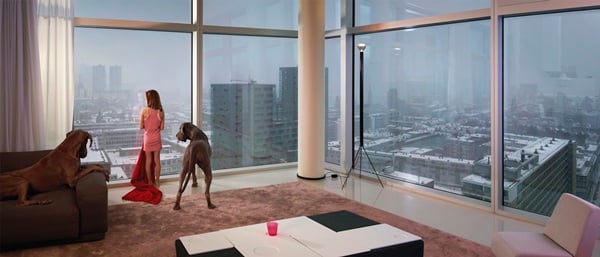
Ellen Kooi, Rotterdam Tower Dogs (2013).
Photo: Courtesy the artist and P.P.O.W.
New York’s P.P.O.W. Gallery devoted its booth exclusively to the work of Dutch artist Ellen Kooi, who creates evocative tableaux of people in natural settings. The images, which range from $5,500-$15,000, come in two sizes, the smaller of which is in an edition of six, and the larger of which comes in an edition of seven.
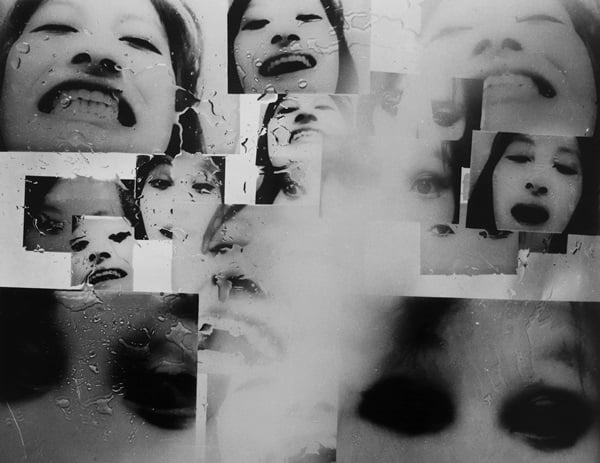
Akira Sato, Untitled (Faces and Water)(c. 1960). Photo: © Estate of Akira Sato.
Photo: Courtesy Michael Hoppen Gallery.
Graphic and experimental works by Japanese photographers were also on view around the fair, like those of Akira Sato, whose rare 1960s prints are on view at Michael Hoppen Gallery, London. Taka Ishii Gallery of Japan had a set of 40 unique works by Nobuyoshi Araki. Each of these erotic black and white photographs of nude women hand-painted by the artist with sumi ink, from his series “Marvelous Tales of Black Ink” (1994), will set you back $8,500. Not bad, considering each is work is unique.

James Welling, 4580 (2007).
Photo: Courtesy the artist and David Zwirner, New York/London.
Among the offerings at David Zwirner were a couple of eye-grabbing inkjet prints by Los Angeles-based artist James Welling that are more experiments with formal abstraction than they are straight up photographs. Though rigorously composed, Welling’s photo-based works, which are also currently on view at “What is a Photograph?” at the International Center of Photography, defy narrative reading in favor of meaning derived from their formal aspects. Also on view at David Zwirner’s AIPAD booth are a set of enchanting Polaroids by Philip-Lorca diCorcia, which the artists produces in the course of creating his large-scale documentary-like works, for which the American photographer is best known. Images from Stan Douglas’s latest series were also on offer.
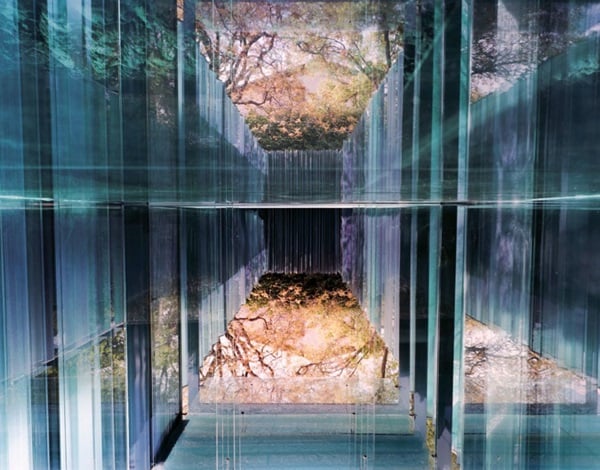
Ola Kolehmainen, Pavilion 2 (2012).
Photo: Courtesy Bryce Wolkowitz Gallery.
Bryce Wolkowitz Gallery had an interesting work on display on the outer wall of its gallery. “The Morphology of Gazes,” by Mariano Sardon, was created by having viewers look at a photo of a celebrity (whether John Lennon or Andy Warhol, among others) while strapped to a device that tracks the viewer’s eye movement. An image, say, of Andy Warhol at first has a few white circular spots dancing across it. But as you continue to watch, the spots become more populous and dense until the image, in certain areas, is whited-out. That work, which comes in an edition of three, was on offer for $10,000. Also in the booth were new LED works by Jim Campbell, whose first New York solo museum show, “Jim Campbell: Rhythms of Perception,” is currently on view at the Museum of the Moving Image, and works by Finnish photographer Ole Kolehmainen (see above), whose minimalist works were first shown in the US at Bryce Wolkowitz in 2010 in a group show of the significant Helsinki School artists.
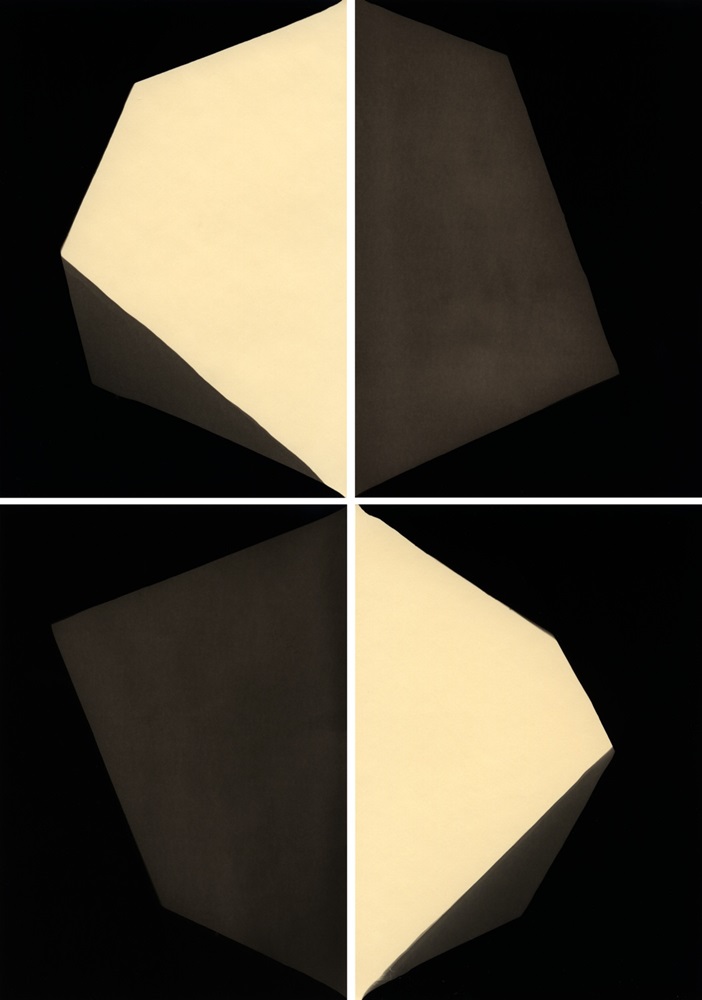
Alison Rossiter, from the series “Fours, Gevaert Gevarto 47” (exact expiration date unknown, ca. 1960s, processed in 2014).
Four gelatin silver prints, unique. Photo: © Alison Rossiter, courtesy Yossi Milo Gallery, New York.
Alison Rossiter’s abstract works straddle the aesthetics of vintage and contemporary photography. Not one for using a camera, Rossiter creates her minimal works by pouring photographic developer directly onto a variety of expired vintage photo paper. Each set of papers—whether Eastman Royal Bromide (expiration date: 1919) or Nepera-Velox (expiration date: 1906)—contains unique qualities that the artist brings out through her processing. Her experimental works are also currently part of ICP’s “What is a Photograph?” show. Also at Yossi Milo’s booth, where prices range from $4,200 up to $42,000, are photo-based works Matthew Brandt (also in the ICP show) created with tar from the La Brea Tar Pits.
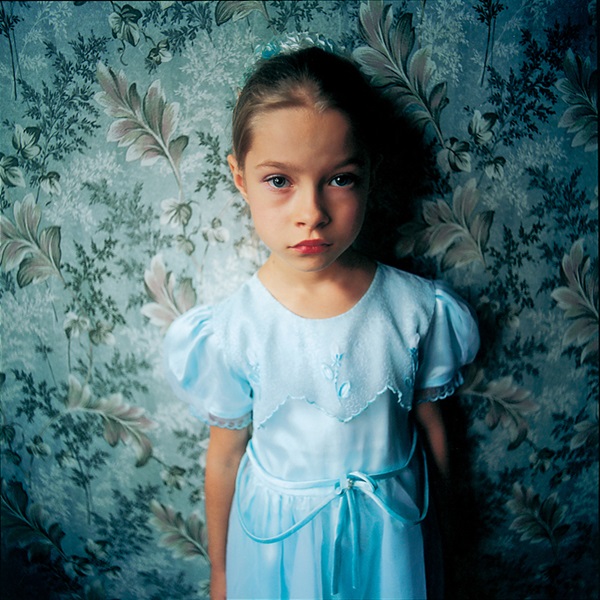
Michal Chelbin, Jenya in my Hotel Room, Ukraine (2005).
Photo: Courtesy the artist and Andrea Meislin Gallery.
You may have recently seen in the New York Times Magazine Michal Chelbin’s photo spread of Orthodox Jews doing yoga. If so, you have an idea of the kinds of subjects that are Chelbin’s bread and butter, those that hedge the quotidian and the fluky. Andrea Meislin Gallery has a number of Chelbin’s works on display, including those from her “Strangely Familiar” series, which documents small-town performers like ballroom dancers, dwarfs, and contortionists going about the off-stage moments of their lives. Her works at AIPAD range from $2,000-$12,500.